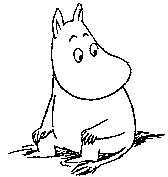So if you want to change anything you have to confirm something too (this was one conclusion to
the exchange on totem journalism below). You have to establish some common ground and speak in a familiar language in order to (then) introduce some more provocative thinking and make an attempt to move your audience in new directions.
Norman Mailer makes a categorical estimate as to how much "urgent, passionate expression" is usually allowed in relation and in proportion to what he terms "the resistant mechanical network of past social ideas, platitudes and lies":
One must accept the sluggish fictions of society for at least nine-tenths of one's expression in order to present deceptively the remaining tenth which may be new. Social communication is the doom of every truly felt thought.
Making a clean distinction like this between empty and truly original rhetoric (and thought) is definitely problematic, and personally I'm not sure that I even recognize the notion of communication which is not social - ? (except that
opening my blog was a striking experience in terms of being only
very vaguely social in a public forum.)
It's still interesting, though, to see how Mailer is ready to quantify his personal communicative pessimism, and I dare anyone to do the same. Perhaps Mailer is really rather optimistic in seeing his glass as one tenth
full?

